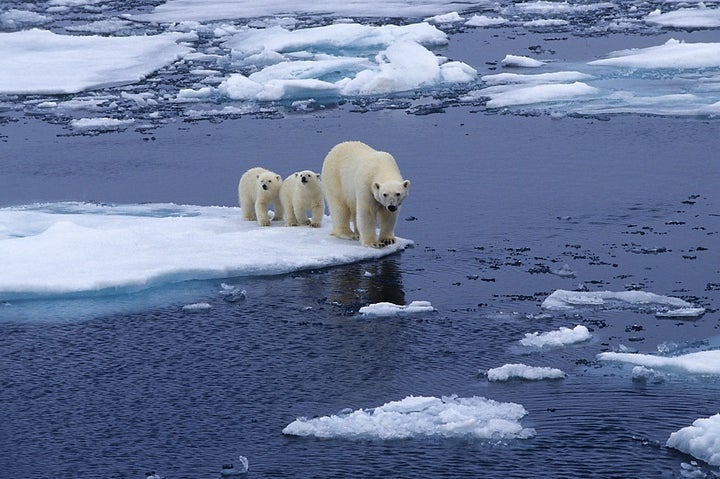
Arctic sea ice reached its annual maximum extent on March 7, the lowest maximum in the 38-year satellite record, according to a new report by the National Snow and Ice Data Center. In other words, both winter and summer sea ice continue to decline.
That report followed another piece of recent sea ice news: A new paper, in Nature Climate Change, reported that CO2 and other greenhouse gas emissions from human activities are responsible for up to two-thirds of Arctic sea ice loss. The study suggests that the rest, a higher proportion than previously thought, may be due to natural variability in the climate system.
That polar bears depend on sea ice and that sea ice can only decline as temperatures rise are both well established by numerous studies. In addition, we have known for over 150 years that global mean temperatures can only increase as long as CO2 levels rise. This means that sea ice and polar bears will ultimately disappear if we don’t stop CO2 rise.
But What About Nature’s Role?
We’ve always known that natural variability creates uncertainty in exactly how fast sea ice will disappear and when the world will warm beyond other important thresholds.
Because different climate models use different assumptions about the role of natural climate variation, existing projections suggest the first summer without Arctic sea ice could occur between 2030 and 2080—a 50-year range. A better understanding of natural variation’s role could help scientists narrow that predicted time span.
The new paper, which focuses on the effects of large-scale swings in air circulation patterns, suggests that natural variability could account for 30-50 percent of the sea ice loss recorded since satellite tracking began in 1979. If the role of natural variability is that great, it could mean a small bright spot for polar bears.
For the past 38 years, we’ve experienced rapid sea ice loss. If 30-50 percent of that loss was natural, the pace should slow when natural cycles swing the other way. And that slower sea ice loss could give polar bears some temporary relief. But, if we don’t soon see a slow-down, it’s probably evidence that natural variability has less impact on sea ice than predicted in this new paper.
The Bottom Line
Knowing how much sea ice retreat has been caused by greenhouse gas increases, and how much by natural variation, may help sharpen predicted time lines. But a better understanding of the role of natural variation does not alter the physical laws requiring sea ice to continue to decline as CO2 levels rise. Therefore, if we don’t stop increasing the CO2 in the atmosphere, record low ice extents like the one just reported can only continue—even if a bit more slowly.
Ultimately, the polar bear’s future is in our hands. Unless we take action to curb emissions, sea ice will be drastically diminished by the end of this century, and the earth’s climate will be largely unrecognizable.
Yet, President Trump’s proposed budget serves up devastating cuts to climate action. These cuts only make sense if we don’t care about the future world we are leaving to our children. Now, more than ever, we need to write and call our elected representatives and tell them we do care about our children’s future, and we want to stay the course on meaningful climate action—for polar bears and for all of us.
